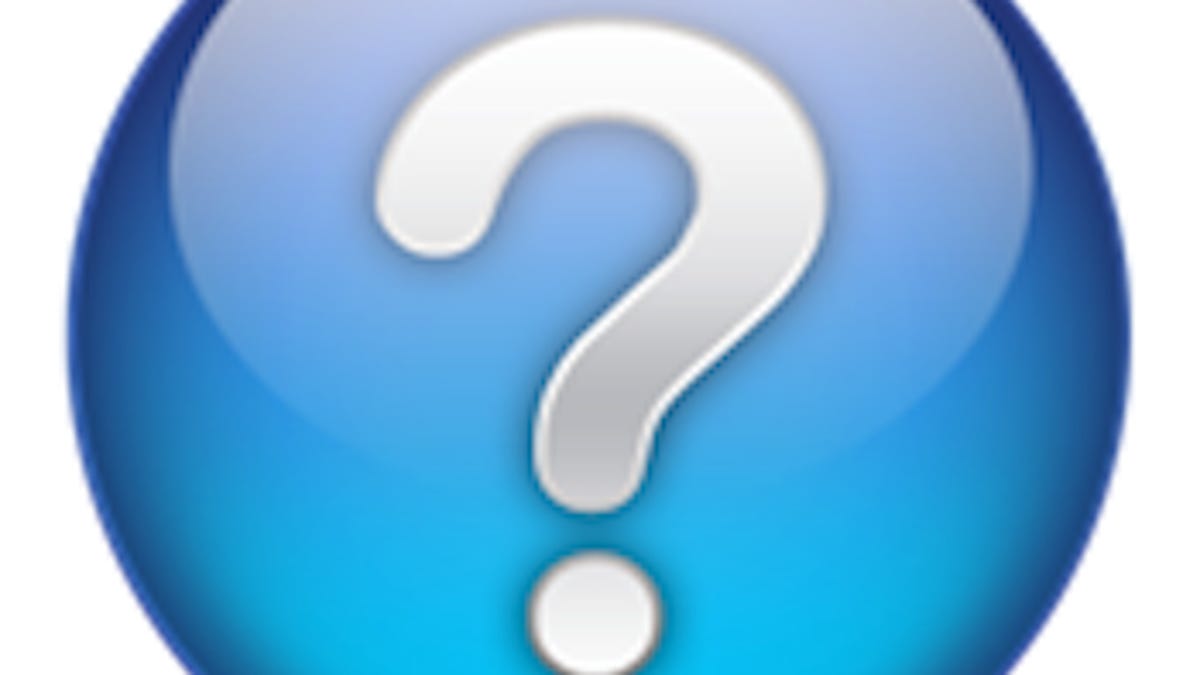Q&A: MacFixIt Answers
Readers ask about how to stop iTunes songs instead of pausing them, among other Mac-related questions.

MacFixIt Answers is a feature in which I answer Mac-related questions e-mailed in by our readers.
This week, readers wrote in asking how to stop a song in iTunes completely instead of pausing it, how to tackle log-in items changing at seemingly random intervals, what to do about burned files appearing as aliases on the resulting DVD, and how to get persistent keychain prompts under control. I welcome contributions from readers, so if you have any suggestions or alternative approaches to these problems, please post them in the comments!
Question: Stopping a song in iTunes instead of pausing it
MacFixIt reader Robert asks about:
How to stop a song after it has started playing in iTunes without using the pause button.
Answer:
If you are using iTunes then press Command-period (the universal "cancel" hot key in OS X) to stop the song and halt all progress, instead of just pausing it. If you simply wish to pause without clicking a button in the iTunes interface, then you can use the spacebar with iTunes in the foreground, or use the corresponding function key on an Apple keyboard.
Question: Log-in items continually changing and reverting in OS X
MacFixIt reader Fred asks what to do about the following:
In Mountain Lion my log-in items list is empty sometimes despite my having added programs to it. Upon revisiting the list items may reappear but not on a consistent basis.
Answer:
From the Go menu in Finder, choose the Library entry (hold the Option key to reveal Library in this menu if it's missing). Go to the Preferences folder in here and remove the file called "com.apple.loginitems.plist" and then log out and back in to your user account. After this, try adding log-in items again to see if they stick.
Question: Burned files appearing as aliases
MacFixIt reader deejayclavines asks:
I created a backup by compressing my mp4s and mp3s, which turned into ZIP files. I burned them to DVD, but they all turned into aliases and when I open them up it says "Fix Alias" or "Delete." When i click "fix," my files still aren't there, just folders. How can i access them again and how do I open them?
Answer:
If you cannot view the contents in Finder, then try using a tool like GrandPerspective to select and index the mounted DVD. This may take a while to do, but will show you a gridlike view of the DVD's contents with each grid square representing a file by its relative size. You can then select items on the grid to see the file path of where each is located on the DVD, and then use this to reveal them in the Finder so you can hopefully restore them. However, if this does not reveal the location of the files, then it is likely the disc did not burn properly.
Question: Persistent keychain prompts interfering with daily activities
MacFixIt reader Shawn asks:
A Keychain prompt keeps popping up every time I'm streaming media (or doing anything really) on my MacBook Pro. This kind of breaks the mood when it pops up four or five times during an hour-and-a-half-long movie. How does one disable it? Will my MBP become an instant virus magnet if I do?
Answer:
When the keychain password prompt shows, it usually shows the service that is in need of authentication (such as an e-mail server, or an application). Is the same service showing in the prompt whenever it pops up? If so then go to the Keychain Access utility, select the "login" keychain, and click "All Items" in the section below the keychain list. Then use the search box to locate the keychain entry based on the service or application name that is mentioned in the prompts, and remove this entry.
If after doing this the problem continues, then use the Keychain First Aid option in the Keychain Access menu to run a verification (and potential repair) on your keychains.
As far as your Mac becoming an instant malware magnet, prevention against malware is not the purpose of the keychain, hence changes to your keychains will not alter your Mac's security with respect to malware. It will at most only require you to enter your password again for a given service (or by its intent, store a password so you do not get this prompt).
Questions? Comments? Have a fix? Post them below or
e-mail us!
Be sure to check us out on Twitter and the CNET Mac forums.

